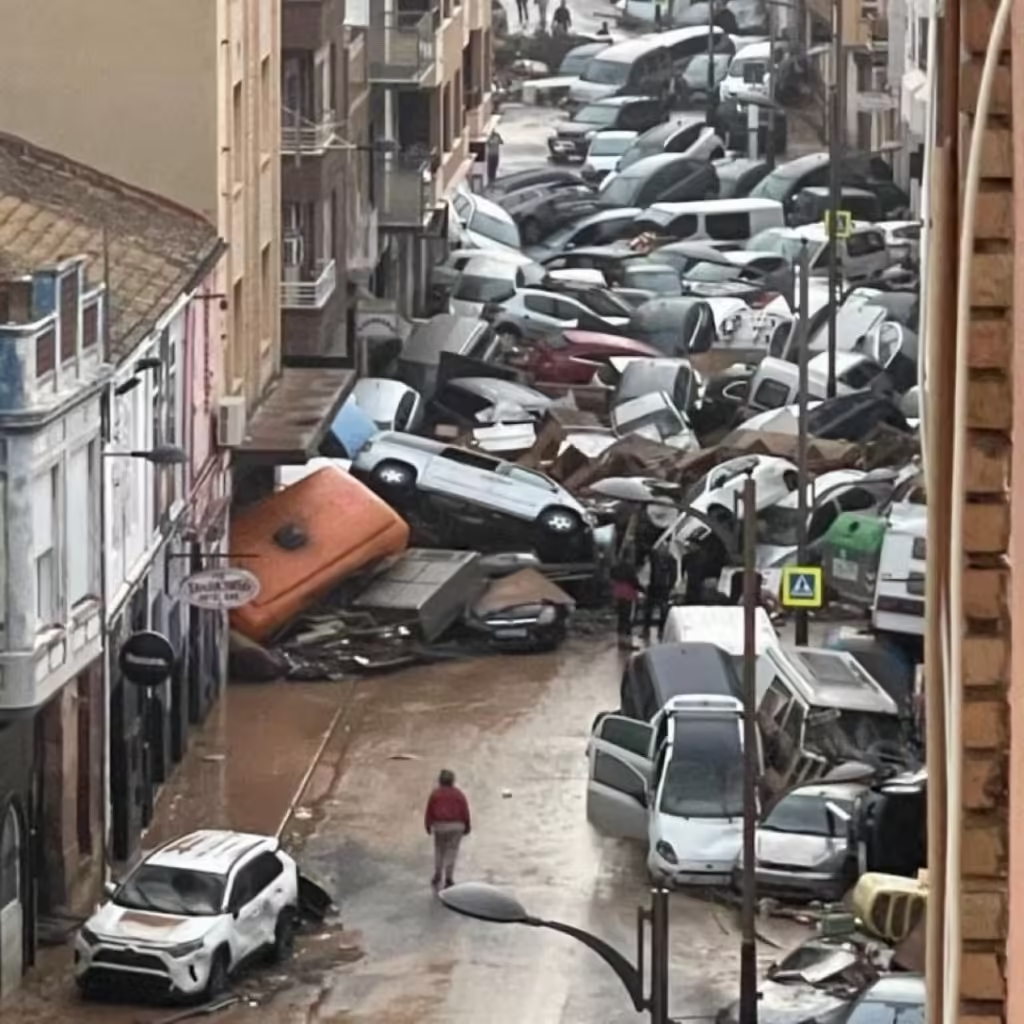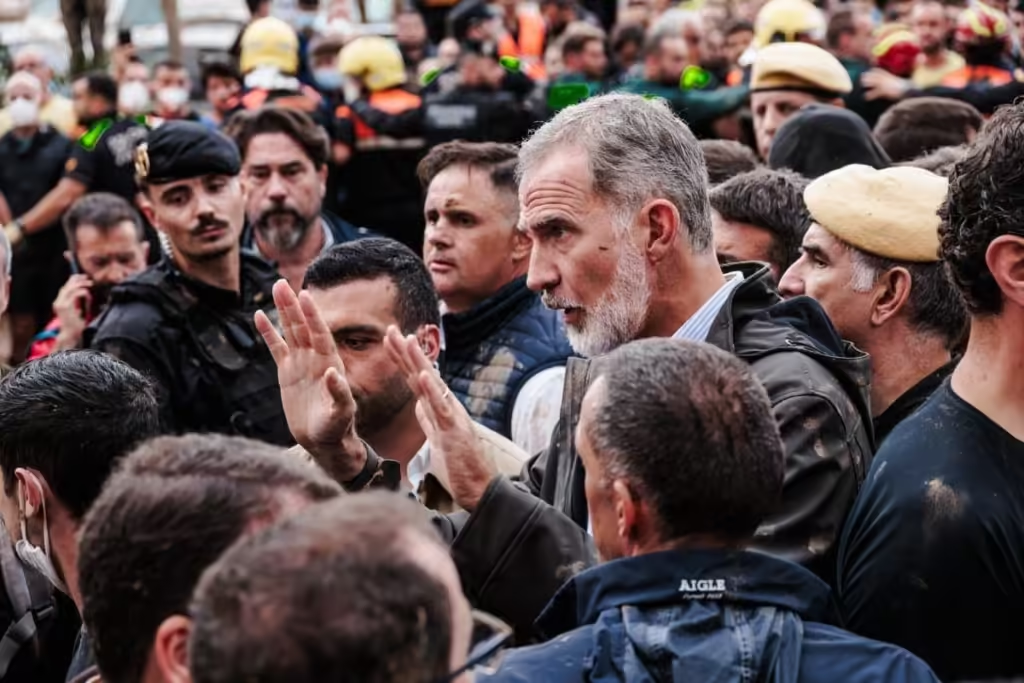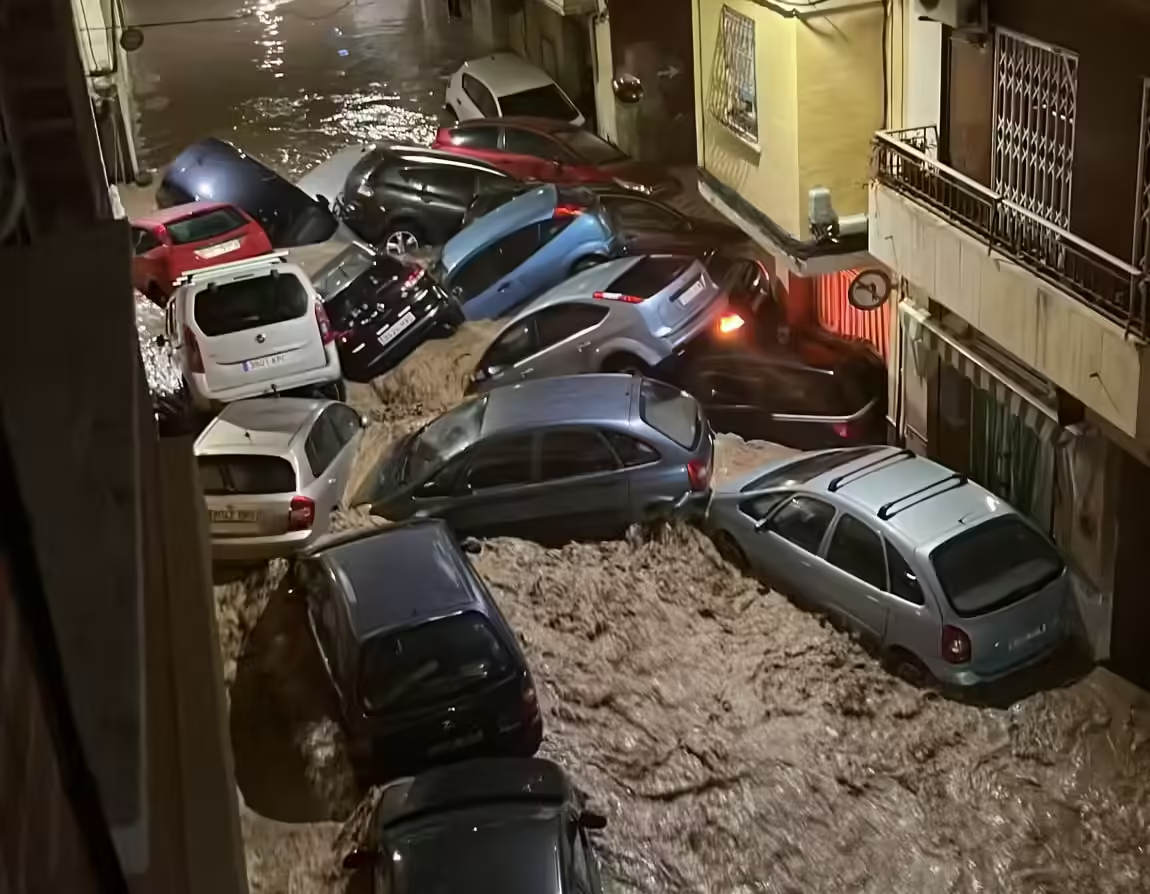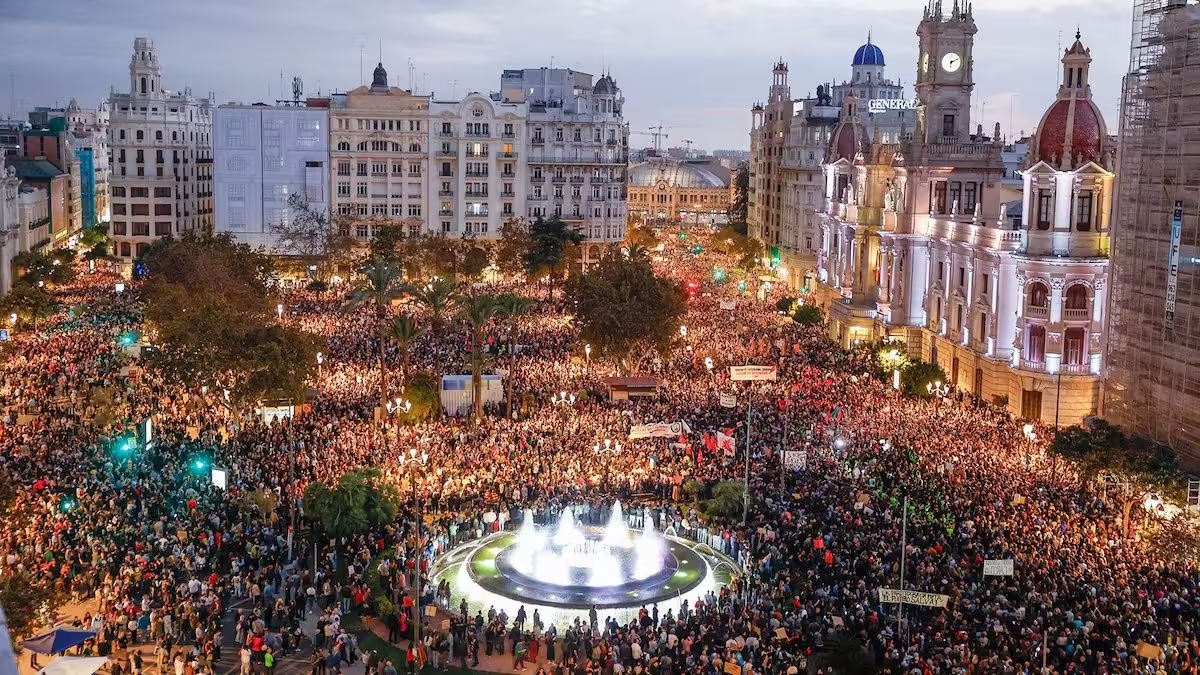First Anniversary of the DANA: One Year After the Disaster That Shook Valencia
On this day last year, we all watched in horror as our social media feeds were flooded with videos and images of the DANA and its impact on Valencia. The videos of cars and people being swept away by flash floods were both difficult to watch and to understand. How could something like this happen in Spain?
Soon after, the media began to report on the number of people missing and the damage left in the wake of one of the worst storms ever to impact Spain. Now, on the first anniversary of the DANA in Valencia, we reflect on what went wrong, and of course, we remember the 229 victims and their families. All Saints Day for these families will be even more poignant this year and perhaps every year from now on.
What Happened on October 29, 2024
The DANA that hit eastern Spain on 29 October 2024 barely moved, bringing an extraordinary amount of rain in just a few hours. In Turís, for example, more than 770 litres per square metre fell, with almost 185 litres in a single hour. The rainfall was so intense that normally dry riverbeds, or barrancos/Ramblas, quickly overflowed, flooding streets and low-lying neighbourhoods within minutes.
The situation was made worse by steep terrain, already saturated soil, and infrastructure that simply couldn’t cope with such extreme conditions. The storm continued to produce repeated bursts of heavy rain throughout the day, leaving towns and residents with no time to recover between downpours. Homes, roads, and public services were badly affected, and some areas experienced multiple flash floods in just a few hours. The scale of the damage was immense, and it quickly became clear that recovery would take months, if not years.
Timeline of 29 October 2024
Early morning (around 5:00 am)
The first heavy showers hit Alzira as a slow-moving weather system kept warm, humid air over the region. From the very start, it was clear this was no ordinary storm. Rainfall began to build quickly, but many residents later said warnings were limited, and they didn’t realise how serious the situation would become.
Late morning (10:00–12:00 pm)
The rain intensified, hitting towns such as Turís and Paiporta with repeated bursts. Barrancos, the normally dry riverbeds, began to overflow, and streets in low-lying areas flooded within minutes. People criticised the Valencia Government for not issuing evacuation advice sooner or providing clear guidance on which areas were most at risk. Urban drainage systems, already vulnerable, were unable to cope with the volume of water, leaving communities exposed.
Afternoon (1:00–5:00 pm)
The storm showed no signs of easing. Some areas were hit by multiple flash floods in a short period, making rescue operations extremely difficult. Locals argued that faster deployment of emergency services and temporary flood barriers could have helped reduce the damage and, in some cases, prevented loss of life.
Evening (6:00–11:00 pm)
By late evening, the rainfall finally began to ease, but the impact was already widespread. Homes, businesses, and roads were badly affected, and many streets remained impassable. Authorities emphasised that the event was unprecedented, but residents felt that better preparation and quicker action could have mitigated the worst of the flooding.

Public Reaction and Protests
The devastation caused by the DANA sparked widespread anger and frustration across Valencia. Many residents criticised what they saw as a slow and uncoordinated response from regional authorities. Social media was filled with messages from locals sharing images of flooded homes, damaged roads, and personal losses, alongside pointed criticism of the Valencia Government’s handling of the crisis.
Protests soon followed, with thousands of people taking to the streets in key towns and cities. The demonstrations focused largely on the regional president, Mazon, with calls for his resignation growing louder. Protesters argued that earlier warnings and better preparation could have saved lives and reduced the scale of the damage. Signs, banners, and chants highlighted perceived failures in disaster management, including delays in deploying emergency services and insufficient support for affected communities.
The anger wasn’t limited to the streets. Online, residents debated accountability, shared stories of damage, and questioned who would pay for the long-term repairs. Many demanded clearer plans for infrastructure improvements and flood prevention measures, warning that without action, similar disasters could happen again.
Public Outrage and the Official Visit
When the official delegation arrived in Paiporta on November 3, including King Felipe VI, Queen Letizia, Pedro Sánchez (Prime Minister) and Carlos Mazón (President of the Valencian region), what was meant to be a show of solidarity turned into a scene of deep rage. Many residents, still surrounded by mud, debris and grief, greeted the visit with shouts of “murderers!”, demanded resignations and aimed mud, bottles and sticks at the convoy.
The anger was directed above all at the government response: warnings had come too late, rescue efforts had been slow, and many families felt left on their own amid one of Spain’s worst natural disasters. At one point the crowd pelted the officials with mud and objects; the Prime Minister’s security team withdrew him from the scene while the King and Queen stayed on, visible and in the mud‑soaked streets.
For many, the visit crystallised the frustration: they felt the officials had arrived late, first and foremost for the photo‑op, rather than to help. Protests erupted not just in Paiporta but across the region, with calls growing for Mazón to resign for his handling of the crisis. The emotional toll was enormous, people whose lives were upended by the floods were now also facing what felt like neglect by those meant to protect them.

Today on the Anniversary: Mourning, Memory and Ongoing Anger
This morning the entire Comunitat Valenciana awoke under an official day of mourning, flags at half‑mast, as the region marked the first anniversary of the devastating DANA. At 10:30 am a civic act took place in the heart of Valencia where 229 symbolic blankets, each bearing the name of one life lost, were laid out in the Plaza de la Virgen. From there hundreds of people marched towards “El Ventorro”, the restaurant where the regional president spent hours on the day of the disaster, carrying placards, chanting “Mazón resignation” and “We will not forget”.
229 mantas térmicas en València en memoria de las víctimas de la dana https://t.co/VP0N4NXQF5 pic.twitter.com/G83th3YDn8
— Biel Aliño (@bieluno) October 29, 2025
A State Memorial took place at 18:00 in the Museo de las Ciencias Príncipe Felipe in the Ciudad de las Artes y las Ciencias, where the King and Queen, the Prime Minister, and regional leaders gathered to read out every name of the victims and observe a minute’s silence. Yet beneath the ceremony lies raw, continued frustration. Victims’ associations maintain that justice is still outstanding, complaining that the head of the regional government, Carlos Mazón, remains in office despite what they call “criminal negligence” and a lack of accountability.
Los afectados encabezan la manifestación de València, a pocos días del aniversario de la #DANA. Gritos de “el president, a Picassent” y “#Mazóndimisión”.
— Patricia Raduá Quintero 📺🎙📻📰▶️ (@PatriciaRadua) October 25, 2025
Muchos ciudadanos llevan letras hechas de barro que forman las palabras “dignidad, justicia, humanidad, protección”. pic.twitter.com/ktmXmeiO4g
For many families, the emotion is too fresh: grief mingles with anger and disappointment. They want more than memorials; they want change. They are demanding clarity, swift action, and the kind of leadership they believe was missing on the day the rain came and stayed.
Even now, the impact of the DANA continues to be felt. Just recently, a body was recovered in Manises, confirmed to be one of the people who went missing during last year’s floods. For families and communities, it was a painful reminder that the tragedy is not over, and that even a year on, the search for closure and answers continues.
Share this content:




2 comments